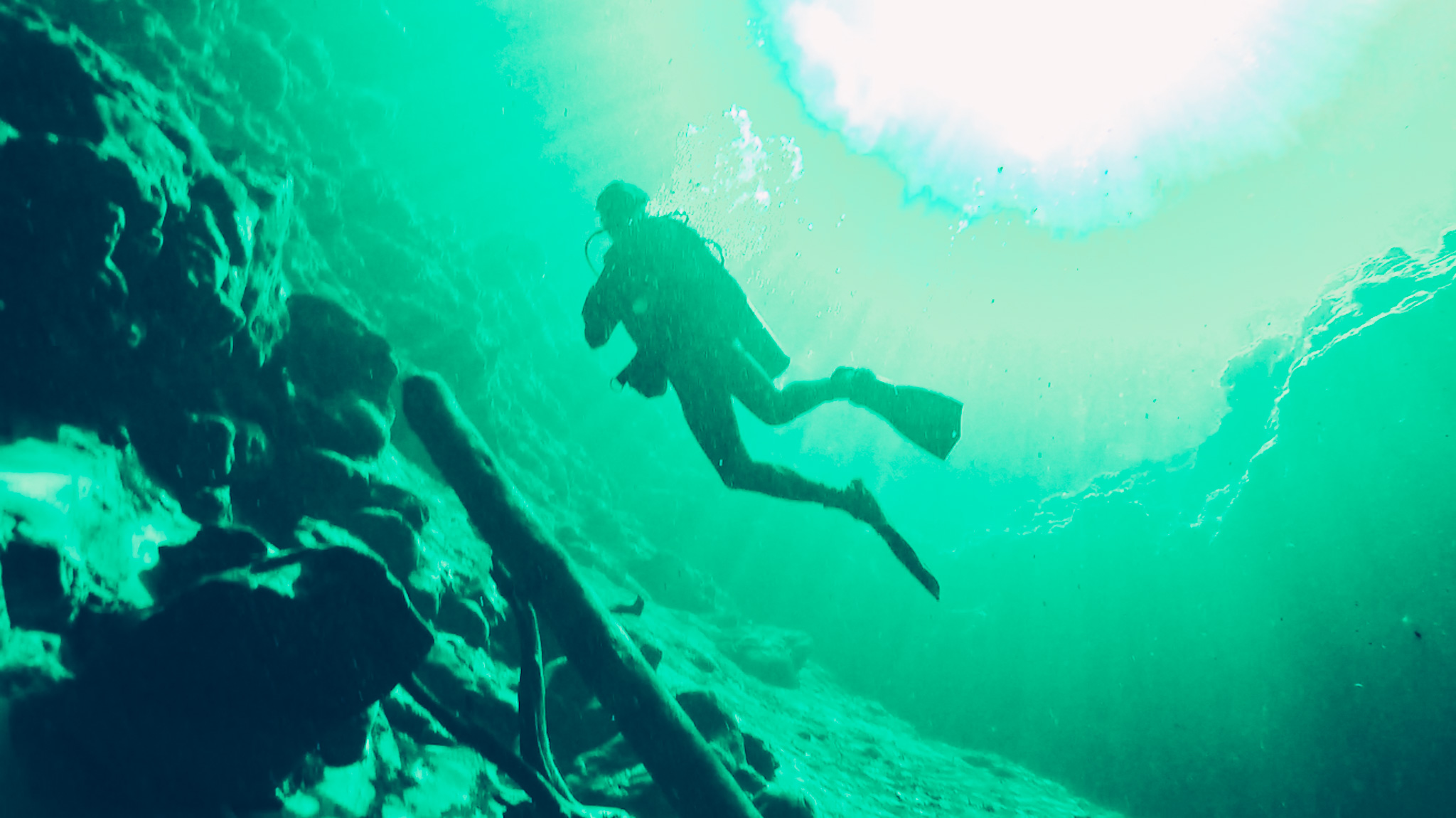If you’re a scuba diving enthusiast, you’ll definitely want to experience some of the Florida Springs for scuba diving.
Its crystal-clear blue waters offer some of the most unique underwater experiences for scuba divers.
From Ginnie Springs to Alexander Springs, Florida’s Spring dive sites are suitable for beginners and experienced divers alike.
The cool thing is that each spring has its own set of wonders and no two are the same. You’ll get to experience underwater caverns, diverse wildlife, and visibility so clear it feels like gliding through the air.
Keep in mind that diving conditions can (and will) vary from spring to spring and good planning is essential to make the most of your dive trip.
Key Takeaways
- Florida’s springs can offer incredible scuba diving experiences with high visibility and abundant wildlife.
- Proper scuba diving gear and certification are required on all dive sites.
- Grab our Florida Springs Diving Map at the end of this article and the Dive Sites Informative Chart to plan your next dive.

Exploring Florida Springs for Scuba Diving
Florida’s freshwater springs are renowned for their crystal-clear waters and offer some extraordinary diving experiences.
Whether you’re looking for an exciting crystalline water experience or are intrigued by the mysterious underwater cave systems, Florida’s springs cater to a wide range of diving preferences.

1. Ginnie Springs
Number one on this list and one of the favorite springs for scuba diving in Florida. At Ginnie Springs you can enjoy different scuba diving experiences that I’m detailing below.
- Ginnie Ballroom: this is one of the most popular diving sites in Ginnie Springs and it’s great for all levels, including beginners. This basin is over 100 feet across and about 15 feet deep and there’s a waterway about 150 feet long, that connects this basin to the Santa Fe River. The star attraction in this area is the Ginnie Cavern and you’ll find its wide entrance right at the bottom of the basin.
- Devil Spring System: Includes Devil’s Eye, Devil’s Ear and Devil Spring known as “Little Devil“. There is a no-light rule in this system for Open Water Divers and only Cave or Cavern-certified Divers are allowed to go inside the cavern carrying dive lights.

- Devil’s Eye: you’ll come across a circular opening that’s about 20 feet wide and just as deep. Nestled at the bottom is a small cavern, adorned with natural features. If you’re a certified diver, you can enter the cavern and explore as much as the sunlight lets you see in there. Just remember to stick with the light and dive within your limits.
- Devil’s Ear: the entrance to this one is like a mini-canyon. At the bottom, the water is shooting out from the cave with force. The water in this spot is usually crystal clear but can have a layer of darker water sitting on top (river tannins). It’s super cool because you can dive under that layer and look up, and it’s like the sun and trees are putting on a light show through this natural, tinted filter.
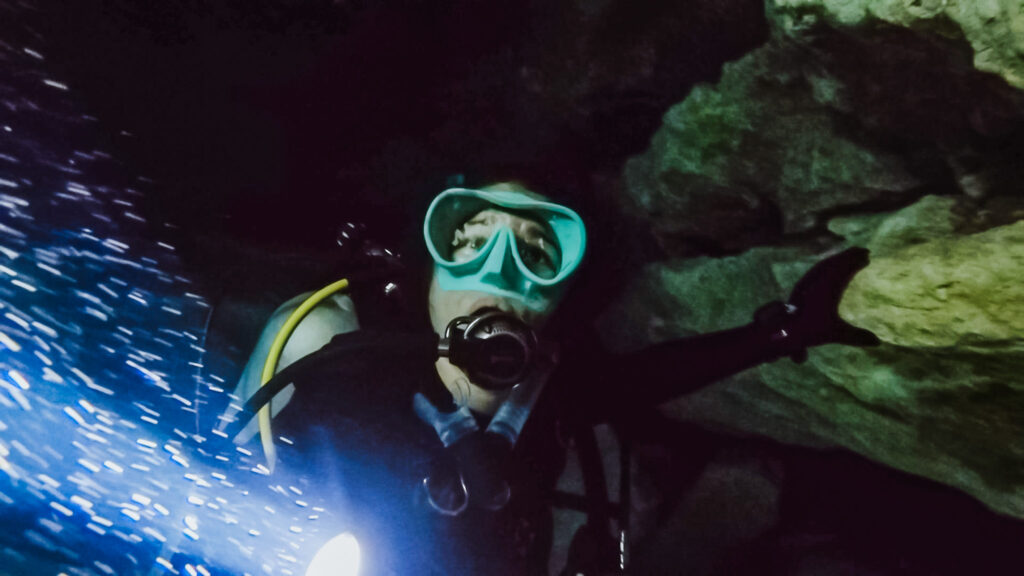
- Little Devil: This is a tight little crack at the start of the Devil’s Spring System run, about four feet wide, and stretches down and out for a solid 50 feet. If you dive down to the bottom and look up, you’ll get a wild view straight up to the sky that’s just unreal. Definitely worth the dive just for that view alone!
🎟 Ginnie Springs is privately owned and they have strict rules for scuba diving that you should be familiar with. Admission for certified divers is $32 and full cave-certified divers pay $24. Scuba equipment is available for rental and there is also on-site camping for those who want to extend their stay.
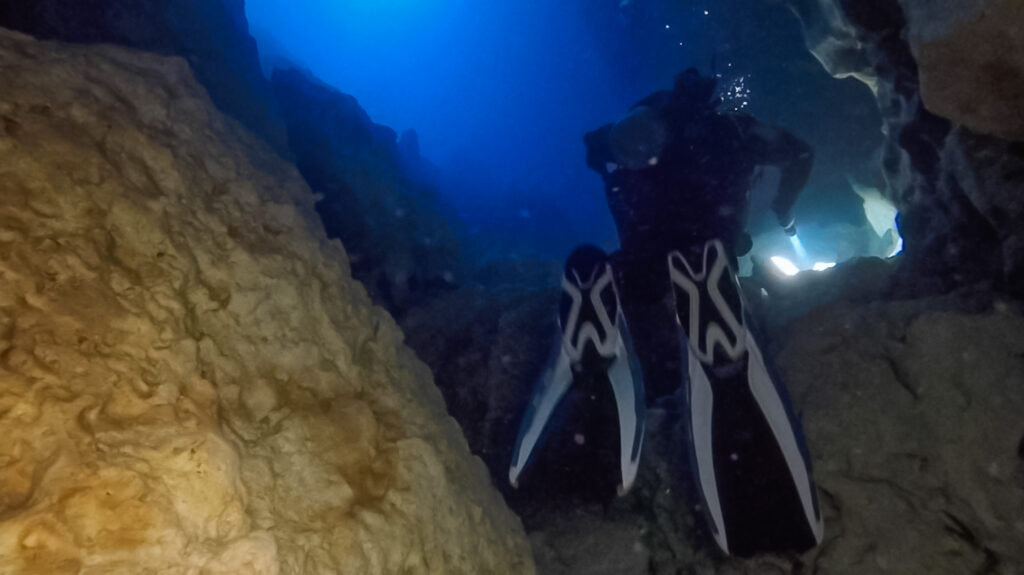
2. Devil’s Den Prehistoric Spring
Devil’s Den is one of the most unique Florida Springs for scuba diving that offers a unique cavern diving experience with limited natural light.
Located in Williston, Florida, you’ll discover this prehistoric spring with very distinct features. This ancient spring is hidden within a dry cave with crystal-clear water and somewhat of a constant temperature of around 70°F.
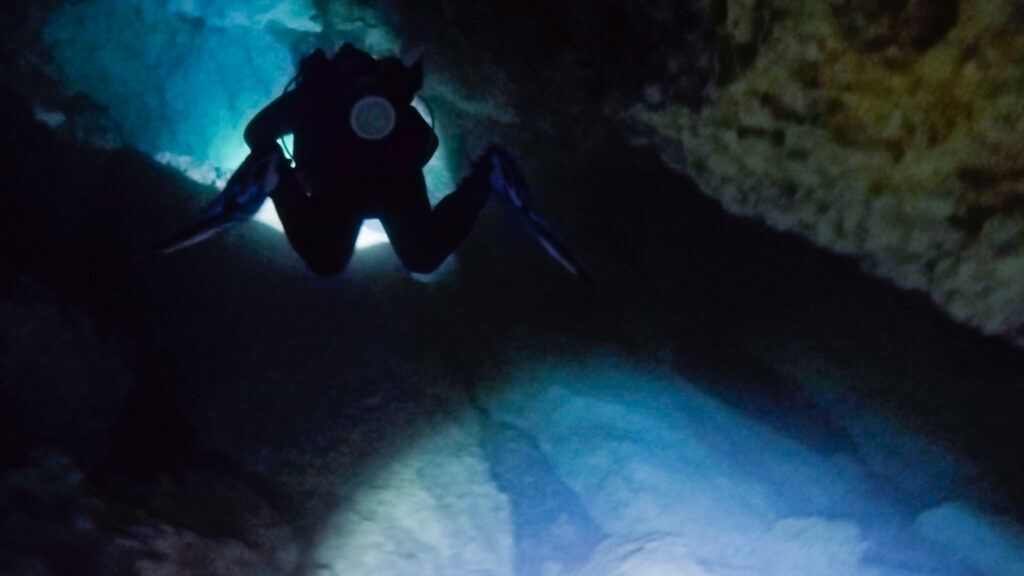
To access the spring, you go down a staircase leading into the stunning cavern with a wide opening to the sky above, that allows the natural light to filter through.
The maximum depth here is about 54 feet, making it an ideal spot for both beginner and experienced divers. You’ll see ancient rock formations, fossil beds dating back over 33 million years, and a variety of fish.
At a certain spot while exploring the cavern you’ll come face-to-face with the “Grim Reaper Sign” which means no access is allowed beyond that point, unless you’re a Full Cave Certified Diver.

🎟 Devi’s Den Prehistoric Spring is privately owned and offers various options such as night dives. Admission is $38 per diver and scuba equipment rental is available as well as tent camping sites and cabin rentals.
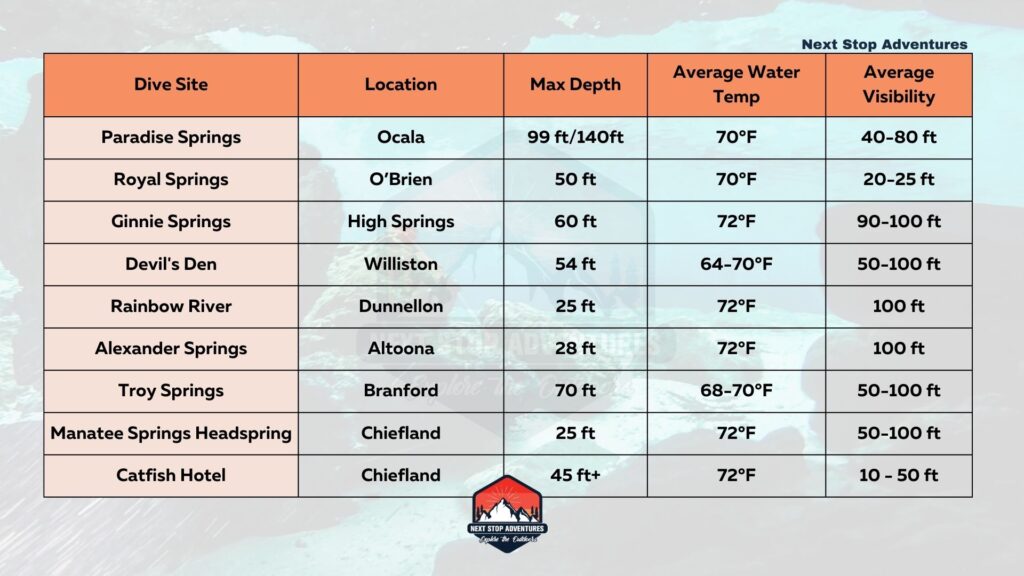
3. Manatee Springs and Catfish Hotel
Commonly known as a paradise for Cave Divers, Manatee Springs is one of the most interesting Florida Springs for scuba diving.
There is a considerable walking distance from the parking area to the springs, which is something to think about if you plan to gear up in the parking lot.

The Manatee headspring (not as popular due to its strong current) and Catfish Hotel Sink are both accessible to Open Water Divers.
Friedman’s Sink and Sue Sink (emergency exit for cave divers) can only be accessed by Certified Full Cave Divers.
Manatee Springs Cave System
With over 33,000 ft of mapped passages (as of 2015) the impressive labyrinth-like Manatee Cave System has been known to be one of the longest and best-explored cave systems in the world.
From the cave system, there is a 500-foot route that connects Catfish Hotel to the headspring.
The cavern’s ceiling and walls are filled with fossils and artifacts and it’s important to mention that touching or removing the fossils is completely prohibited.
Just remember to “only take memories and leave nothing but bubbles!”.

Catfish Hotel
Right across from the main spring at Manatee Springs State Park, you’ll find the Catfish Hotel Sink, easily spotted by the thick layer of green duckweed that often covers it.
Although from any angle you look at this sinkhole, the duckweed doesn’t seem inviting at all, don’t let that keep you away from this fantastic diving site!
The visibility here can be quite challenging due to dark walls and heavy particles in the water, making it hard to see at times.
Open Water Divers are not allowed to carry any dive lights. Therefore, you have to be really careful not to stir up the silt from the bottom to avoid making the visibility any worse.
Nonetheless, this particular environment at Catfish Hotel is what makes it one of the most talked-about diving sites in Manatee Springs.

Main Spring
While you can also dive at the main spring (headspring), this site is a bit less popular due to its strong current.
During wintertime, also known as manatee season in Florida, manatees migrate to the warmer waters of the main spring, thus the name “Manatee Springs”.
If you encounter manatees during your dive, the regulation to follow is to keep a distance of 50 ft from the manatees.
The main attraction of scuba diving in the headspring is the underwater environment; it’s both serene and full of life!
From the gentle flow in the shallower areas to the more challenging currents that make this a fun experience. This is a place where you can peacefully coexist with the wildlife, including various turtle species.
🎟 The Manatee Springs State Park entry fee is $6 and no extra fee is required for scuba diving. All divers must present certification at the entrance. Scuba equipment rental is not available and diving is on a first-come, first-served basis. The glamping experience is open for bookings for those who wish to stay longer.
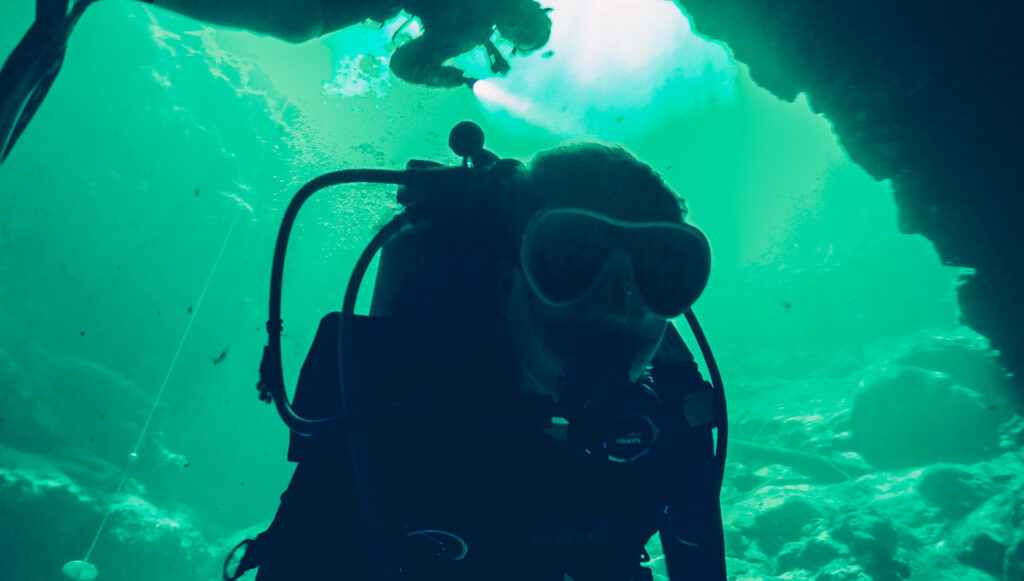
4. Troy Springs
This beautiful spring is connected to the Suwannee River and it’s a hidden gem for scuba enthusiasts.
Troy Springs features a broad, open basin that’s about 70 feet wide and plunges to a depth that’s about equally deep.
To get to the spring entrance, you will have to walk down the boardwalk with your gear on. It’s a short walk of just about 2 minutes or so, depending on where you park.
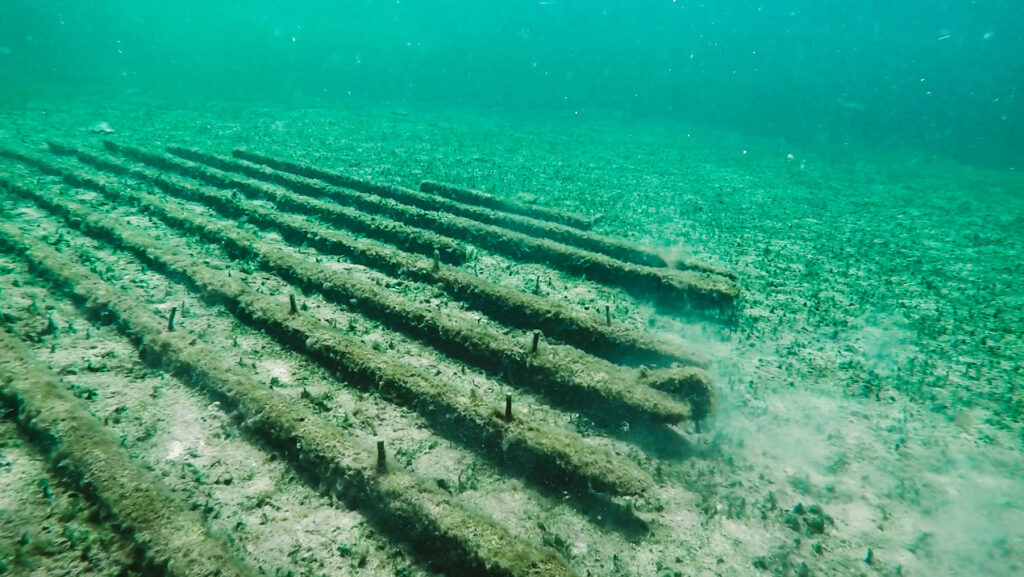
The main underwater attraction here is Steamship Madison—a sunken Civil War-era steamboat that provides a historical backdrop for your underwater adventure.
While Troy Springs doesn’t have extensive cavern systems like some other Florida springs, its historical significance and the presence of the steamboat wreck make it a unique dive site.
🎟 This dive site is suitable for certified divers of all skill levels. The entrance fee for Troy Springs is $5 per vehicle and no scuba equipment rental is available.
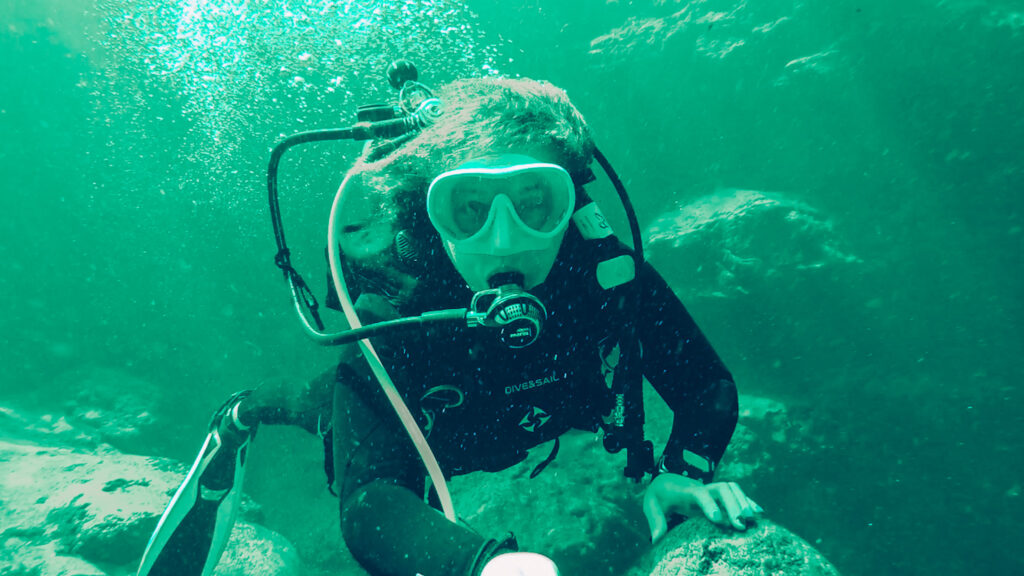
5. Rainbow River
Scuba diving in Rainbow River has a whole different vibe. This is the only one of its kind on my list, as it’s a mesmerizing drift dive experience.
You will arrive at the launch site for this dive via KP Hole Park. If you don’t have a boat, it’s best to book a boat shuttle service with Rainbow River Taxi so they can drop you off upstream.
A great thing about this dive site is that you can have your family join you since this section of the Rainbow River is a very popular spot for swimming, snorkeling and tubing.

The river is crystal-clear for about a 7-mile run and the current gently guides you along, so you can pretty much just take in all the scenery.
This is drift diving at its finest, with visibility that can exceed 100 feet on any good day! You’ll see lush grass beds and all sorts of wildlife – turtles, fish, and maybe even an otter if you’re lucky.
Rainbow River drift dive is an easy, no-stress dive that’s all about enjoying the natural beauty of Florida’s crystal-clear waters.
🎟 The entrance fee for divers at KP Hole Park is $20 and does not include the water taxi service. The best time for a Rainbow River drift dive is early morning hours to avoid the afternoon crowds.
6. Alexander Spring
This one is a nice and super chill diving spot that’s perfect for newbies, anyone looking to take it easy, or even for trying new gear.
The water in Alexander Springs is crystal-clear and mostly constant at 72°F (but still chilly) year-round.
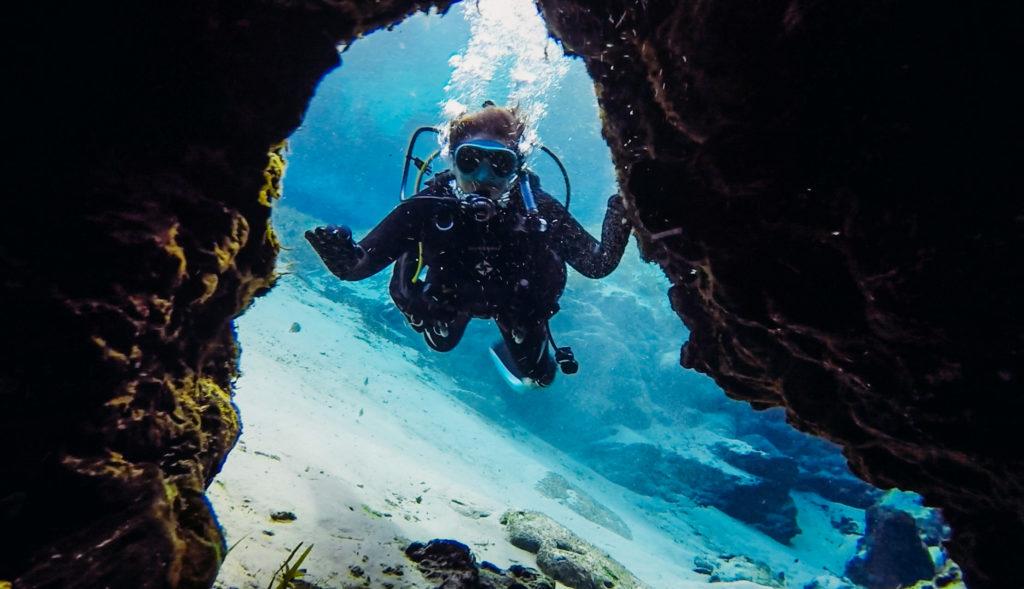
Nestled inside the Ocala National Forest, this is one of the few places in Florida where you can see mermaids while scuba diving! And by mermaids, I mean REAL mermaids 😉
The visibility is top-notch, even at its deepest depth of 28 ft. You can expect to see lots of fish and some cool plants as well as a small cavern about 10 ft deep.
Alexander Springs is a great dive site to consider if you’re looking for a relaxed underwater experience or just to get in some water time.
Important Notice Regarding Alexander Springs: Due to recent alligator sightings and incidents, Alexander Springs has been closed a few times to ensure the safety of visitors. Before you go, check their website for updates, and remember…safety first, always!
🎟 The entrance fee for Alexander Springs is $8/pp on weekdays and $11/pp on weekends. There is a concessionaire and campground available for extended stays.

7. Paradise Spring
If you’re itching for a more exciting adventure, then you need to check out Paradise Springs for your next dive. Also privately owned, this dive site is a true hidden gem with an otherworldly vibe.
Unlike many of the other Florida Springs that I mention here, Paradise Springs is only open to Certified Divers. Therefore, it’s less of a ‘spring pool‘ and more of a karst entrance to the underwater cavern.
I do have to mention that for this dive site, you will have to gear up in the parking area and then go down a staircase to reach the entrance to the karst window.
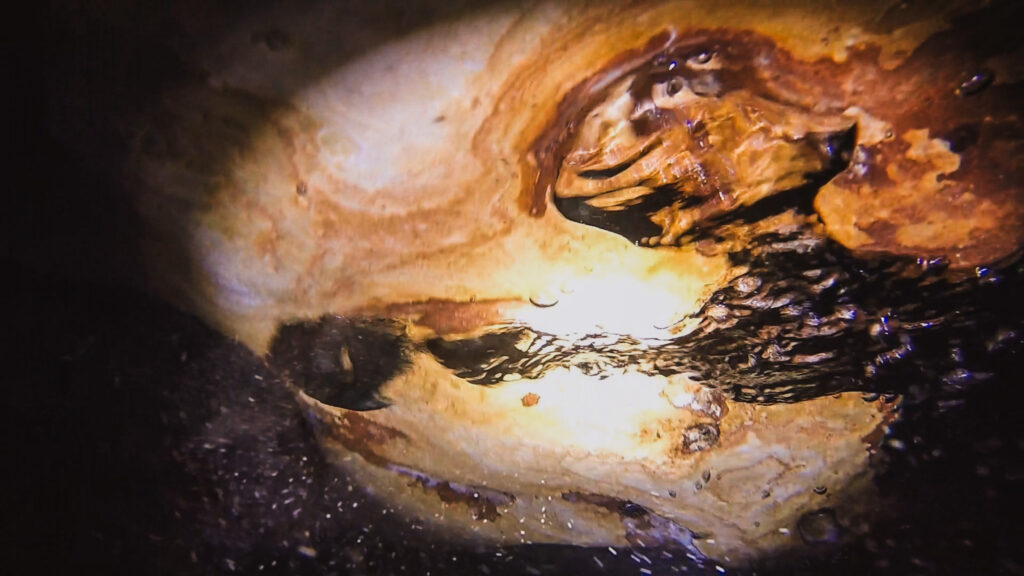
You’ll then descend into the cavern through a natural limestone opening that feels like a gateway to an ancient world. The water is crystal clear, and as you go down, the light from above creates this epic, blue glow that’s just unreal.
The best part? You’ll be able to see fossils embedded in the walls that are millions of years old!
As you dive down to around 20 feet, keep an eye out for a permanent yellow line that will guide you to the bottom of the cavern, a chamber sitting at 99 feet deep.
At this depth, the daylight from the surface begins to fade and it’s almost pitch black down there. Nonetheless, you can still catch a bit of the glow of light from high above.
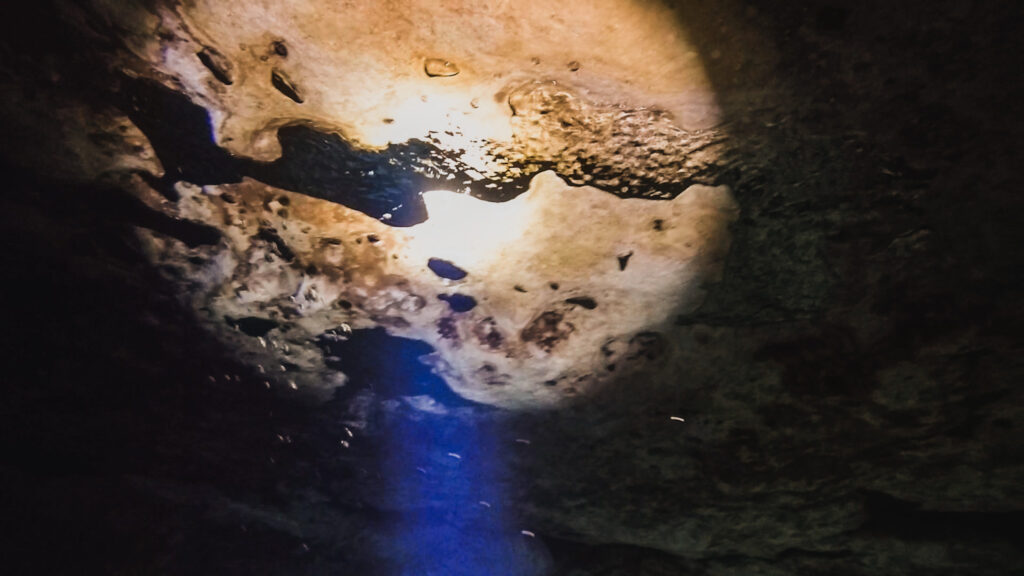
In this cavern chamber, you’ll come across the “Grim Reaper Sign,” identical to the one at Devil’s Den, as a serious reminder that only those with full cave diving certification should continue past this point.
Past the sign, there’s a narrow passage that drops even further to 140 feet, but it’s crucial to take the warning seriously.
Without the right certification and gear, you should never go beyond this point—safety first, always!
🎟 The entry fee for Paradise Springs is $30, cash only. All divers must have a main dive light and a backup light. Scuba equipment rental is not available and the dive site is closed on Mondays and Tuesdays.
8. Royal Springs
This one is also a good site for a more laid-back dive with a peaceful vibe.
Royal Springs is a smaller, less-crowded dive site, which means you can take your time exploring without bumping fins with a bunch of other divers.
The spring basin is about 160 feet in diameter and drops to a depth of around 42-50 feet. You’ll see a submerged tree that makes for some epic underwater photos.
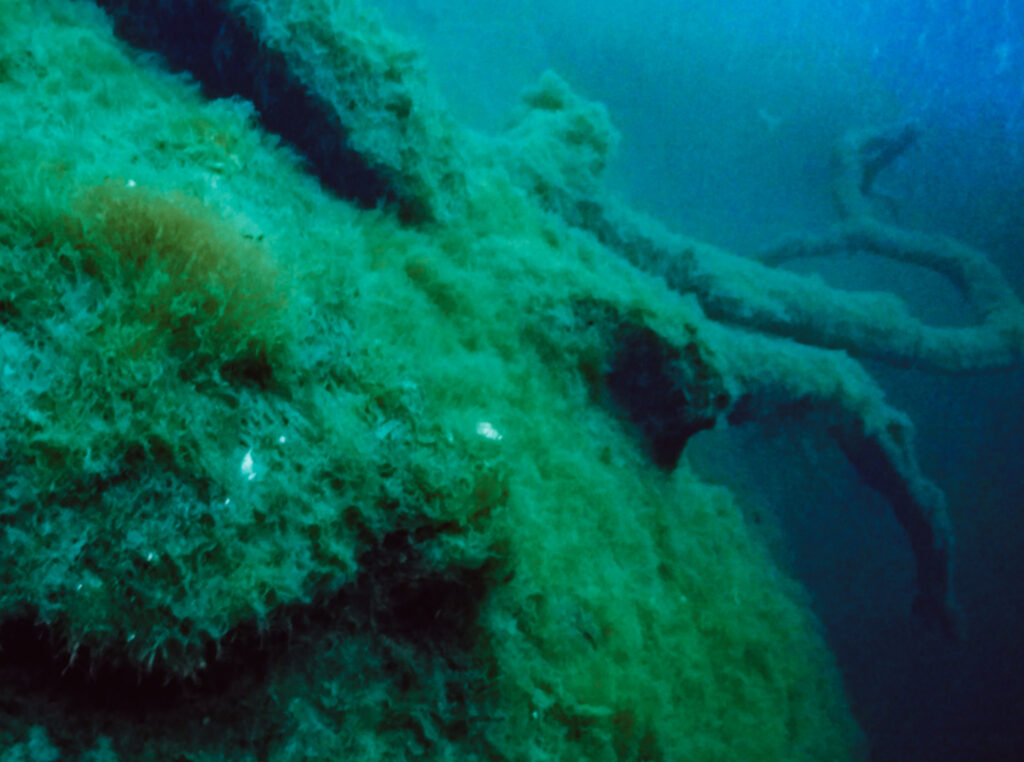
Plus, an underwater ‘platform’ where you can chill for a bit, and I think I was there more than I should’ve of because that’s where I got a ‘fantastic‘ leg cramp.
The visibility in Royal Springs is probably the worst of all these Florida Springs for scuba diving sites on my list. Regardless, you’ll still be able to spot some cute turtles around, especially at the beginning of your dive.
With this being such a small site, I recommend you have an additional dive location on the same day that you visit Royal.
🎟 Admission to Royal Springs is free and scuba equipment rental is not available.

What to Wear in Florida Springs for Scuba Diving
When making your list of Florida Springs for scuba diving, you should definitely consider your diving gear.
Keep in mind both comfort and the varying water temperature of the springs, although it’s mostly constant at around 70°F year-round.
Wetsuit for Florida Springs
You should wear a wetsuit that’s suitable for the spring’s water temperature, and not the typical one you would wear to maybe an ocean dive.
Usually, a 5mm to 7mm wetsuit works well to keep your body warm throughout the dive. As a reference, I use a 5mm wetsuit on all my spring dives.
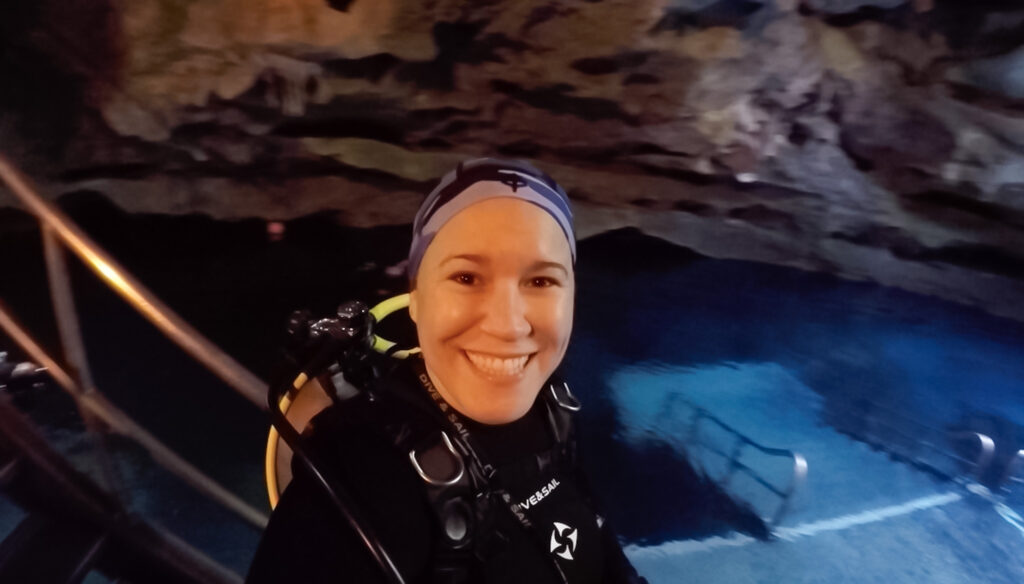
Thermal Protection Accessories
If, like me, you tend to get cold easily, then you will need a dive hood, gloves, and booties.
Recommended Accessories for Your Spring Dives 🐟 Aqualung Seawave 3/1mm Hood 🐟 Aqualung 3mm Thermocline K Gloves 🐟 Aqualung 5mm Echomid Boots
If you’re renting scuba gear, familiarize yourself with the functionality of each accessory before getting in the water to make sure it will work for you.
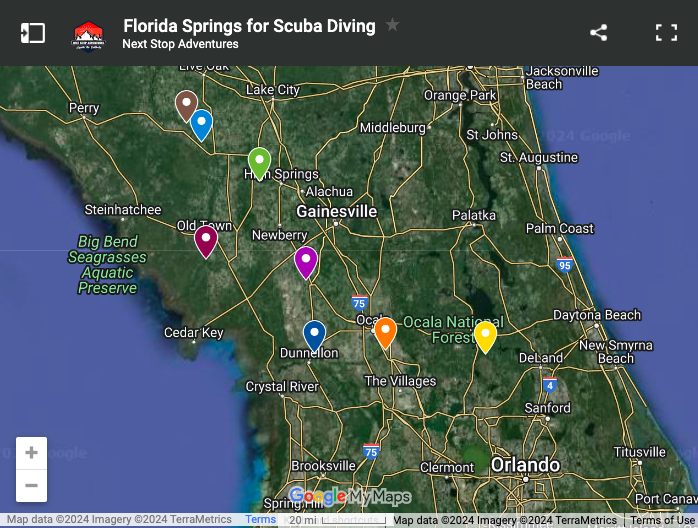
Final Thoughts
Scuba diving in Florida is an incredible adventure that offers something for every diver in a variety of exciting settings.
Whether you’re exploring the mysterious depths of Paradise Springs or going for a relaxing dive at Alexander Springs, each of these dive sites will surely leave you with an unforgettable diving experience.
As you plan your trip to any (or all) of these Florida Springs for scuba diving, remember to verify accessibility, dive conditions, and double-check on the site’s website for any updates on their fees.
Please practice responsible tourism and preserve the pristine condition of Florida’s underwater treasures. Minimize your impact and keep the environment as undisturbed as possible. And by all means, enjoy your dive!
Save it for later!


Hey, I’m Yanitza 👋 Adventure Travel & U.S. Destination Specialist, travel writer, and hidden-gem hunter with over 8 years of experience helping travelers explore deeper and travel slower. I specialize in crafting authentic, stress-free adventures from small towns to scenic hikes and scuba dives. I’m a firm believer that the best stories happen when you venture beyond tourist hotspots. When I’m not planning getaways or writing travel guides, I’ll probably be home rewatching The Vampire Diaries like it’s my job and daydreaming about future adventures in Spain.

